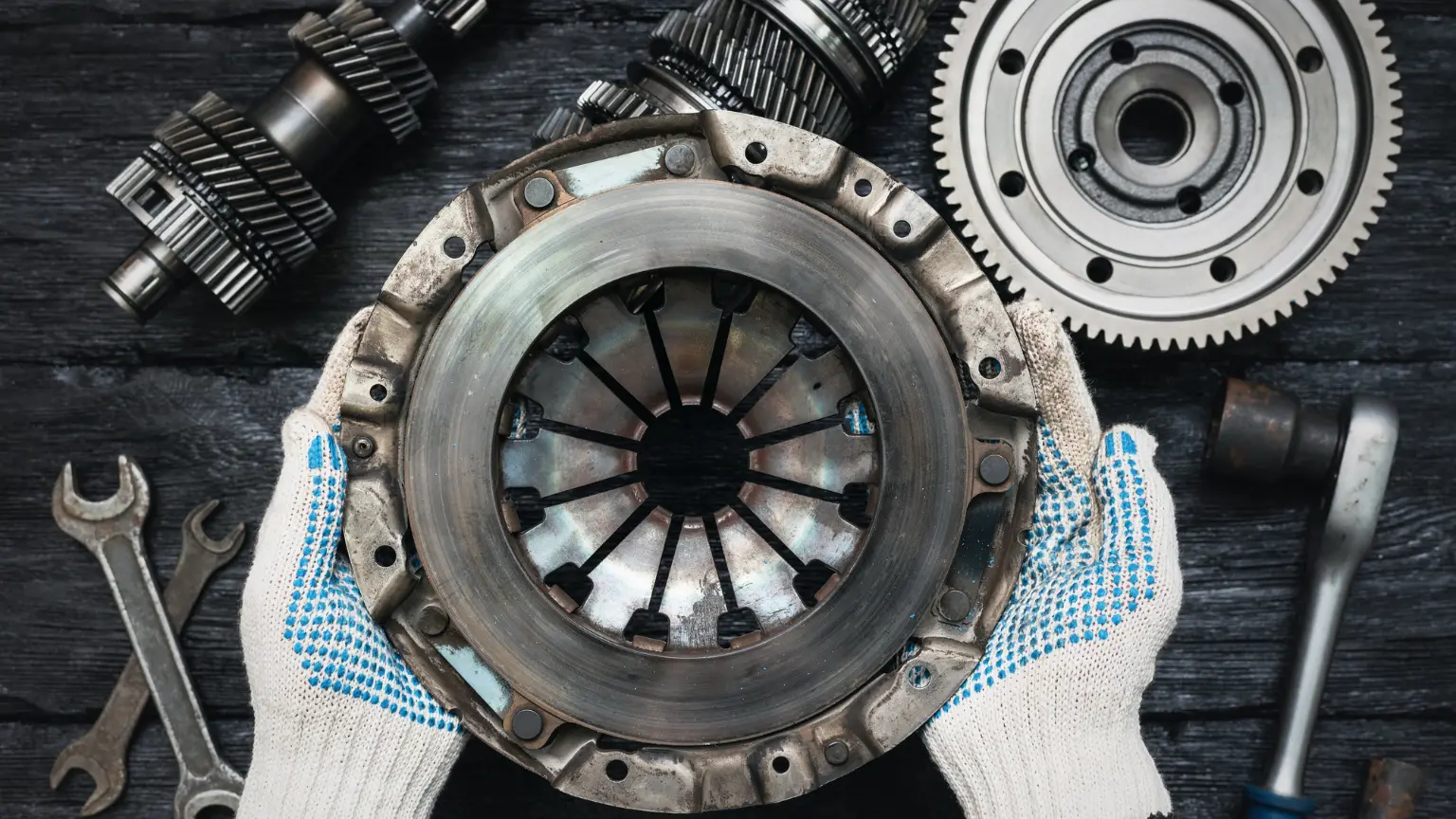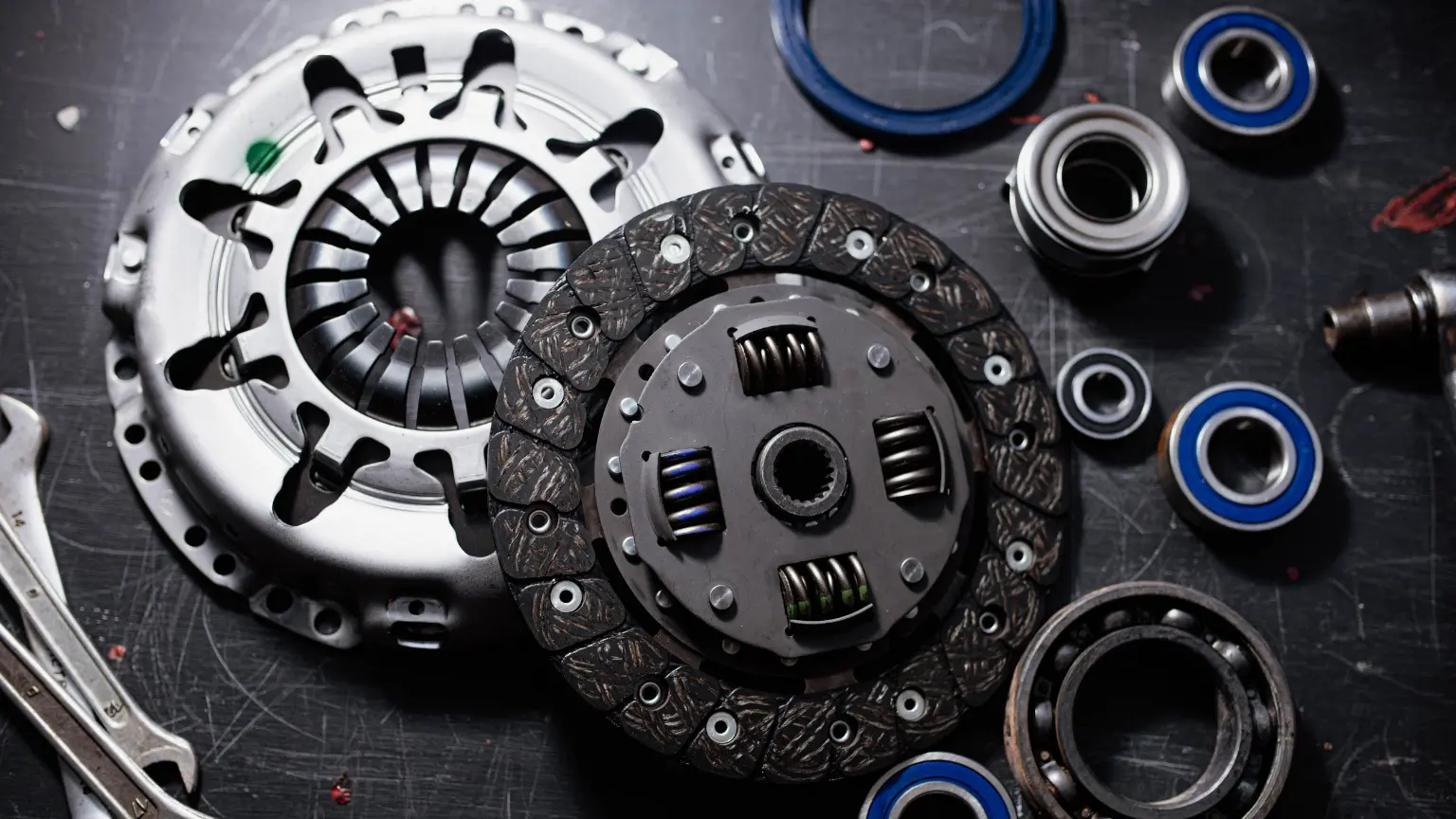Exploring the Technology Behind Semi-Automatic Car Transmissions: A Technical Overview
A CVT uses adjustable pulleys and a belt to provide infinite gear ratios, keeping the engine at its ideal RPM for smoother acceleration, better fuel economy, and seamless driving in any condition.

Semi-automatic car transmissions bridge the gap between manual and automatic systems, offering a unique blend of control and ease. These systems allow the driver to change gears manually but eliminate the need for a clutch pedal, which is managed electronically instead. This setup combines the enjoyment of manual gear shifting with the convenience of an automatic transmission, making it a popular choice among car enthusiasts and everyday drivers alike.
How Semi-Automatic Transmissions Work
The Mechanics
The core of semi-automatic gear shifting technology lies in its ability to allow drivers to manually control gear selection without the need for a clutch pedal. This is achieved through an automated clutch mechanism that engages and disengages based on the gear chosen by the driver. It provides a more interactive driving experience while ensuring smooth transitions between gears, typical of an automatic transmission.
Role of Sensors, Actuators, and Electronic Control Units
These rely heavily on a network of sensors and actuators controlled by sophisticated electronic control units (ECUs). These components monitor vehicle speed, engine load, and driver inputs, adjusting the gear shifts accordingly. Precision ensures optimal performance and efficiency, illustrating the intricate technology in semi-automatic transmissions.
Clutch Engagement and Automatic Shifting Processes
Clutch engagement is finely tuned through electronic sensors that dictate when to engage or disengage the clutch. This process eliminates the manual clutch pedal, streamlining the car transmission function for enhanced driving comfort. Automatic shifting is similarly managed, with the system selecting the ideal gear based on current driving conditions without driver intervention.
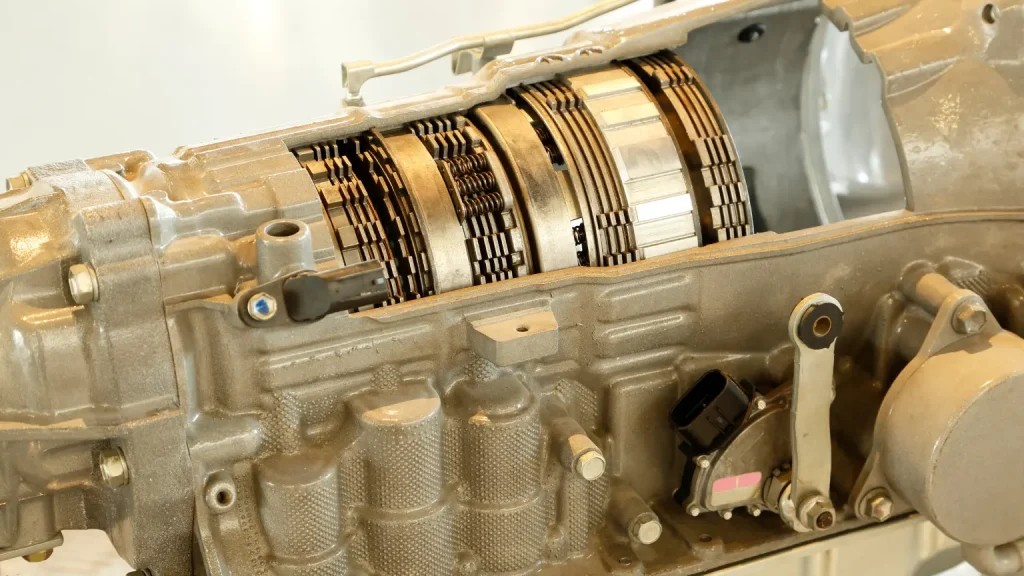
How It Optimizes Performance
Semi-automatic driving systems are designed to optimize vehicle performance by combining the advantages of manual and automatic transmissions. By allowing for quicker gear shifts and reducing the chance of human error in clutch usage, these systems can improve acceleration and reduce fuel consumption, making them highly effective in various driving scenarios.
Key Features of Semi-Automatic Transmissions
Precision in Gear Changes
One of the standout features is their precise gear change capability. The advanced control system ensures that gear changes are swift and exact, reducing the risk of slippage and enhancing the vehicle’s overall performance. Such accuracy supports smoother acceleration and deceleration, catering to spirited driving and daily commuting equally efficiently.
Enhanced Driver Engagement
Advanced transmission systems elevate driver engagement by allowing motorists to select gears via paddles or sequential shifters manually. This interaction offers the thrill of manual shifting with the added benefit of automated clutch management, appealing to those who enjoy a more hands-on driving experience without the complexities of a fully manual transmission.
Improved Fuel Efficiency and Performance
The design of semi-automatic transmissions inherently improves fuel efficiency and performance. By optimizing gear shifts and reducing the interval between changes, these systems ensure that the engine operates within the most efficient rpm range, thereby conserving fuel while delivering better torque and power output.
Adaptability to Different Driving Conditions
Whether navigating city traffic, cruising on highways, or tackling steep inclines, these transmissions adjust gear shifts to maintain optimal engine performance and stability. Adaptability makes them suitable for diverse environments and driving styles.
Comparing Semi-Automatic vs. Automatic Transmissions
Functional Differences Between the Two Systems
Semi-automatic vs. automatic car transmissions differ fundamentally in how they allow driver input and control. While automatic systems handle gear shifting entirely, semi-automatic systems enable drivers to participate by manually selecting gears when desired. A hybrid approach of semi-automatics appeals to drivers who seek control without the complexity of a clutch pedal, bridging the gap between manual and automatic transmissions.
Pros and Cons of Each Transmission Type
Each type of transmission offers distinct advantages and drawbacks. Automatic transmissions are prized for their simplicity and ease of use, making them ideal for city driving. In contrast, semi-automatic transmissions combine control and comfort, appealing to performance-oriented drivers. However, semi-automatics can be more expensive and complex to maintain, which may be a consideration for some buyers.
Suitability for Performance vs. Commuter Vehicles
The suitability of transmissions depends largely on the vehicle's intended use. For performance vehicles, car gear-shifting technology offers rapid shifts and manual engagement, enhancing the driving experience. On the other hand, automatic transmissions suit commuter vehicles, offering smoother, hassle-free operation for daily drives. Understanding these differences is key to selecting the right system for your needs.
Maintenance Considerations for Both Systems
Both require consistent maintenance to ensure their longevity and performance. While the maintenance needs of each system differ, both demand attention to key components, such as fluid levels, sensors, and internal mechanisms. Here are critical points to consider for both:
- Fluid Changes and Checks: Transmission fluid plays a vital role in both systems, ensuring smooth gear operation, reducing friction, and cooling the internal components. Over time, this fluid can degrade, becoming less effective at performing these functions. Regularly checking and replacing transmission fluid prevents overheating, reduces wear, and maintains optimal performance. For automatic transmissions, fluid changes may be less frequent but critical, while semi-automatic systems might require more specialized fluids depending on the manufacturer. Neglecting this maintenance can lead to excessive wear, causing damage to internal parts that could result in costly repairs. Adhering to the manufacturer’s recommended service intervals is essential for both systems.
- Software Updates for Semi-Automatics: Regular software updates ensure the system functions efficiently and integrates with other vehicle components, such as the engine and sensors. These updates often include performance enhancements, bug fixes, and compatibility improvements, which can improve fuel efficiency and responsiveness. Failing to update the software can result in laggy performance or even mechanical errors. Vehicle owners should have these updates performed by professionals during routine service visits to keep the semi-automatic system operating at its best.
- Filter Replacement: Transmission filters play a critical role in both systems by trapping debris and contaminants that could otherwise damage internal components. Over time, these filters can become clogged, reducing their effectiveness and causing the system to work harder than necessary. Routine replacement of transmission filters ensures cleaner fluid circulation, prolonging the system's lifespan and improving overall efficiency. More frequent filter changes may be required for vehicles operating in harsh conditions, such as dusty environments or heavy traffic.
- Inspection of Clutch Components: Semi-automatic systems include an automated clutch that requires periodic inspections to detect wear, misalignment, or other issues. Over time, these components can degrade, particularly in vehicles subjected to frequent stop-and-go traffic or heavy towing. Early detection of wear through regular inspections can prevent clutch slippage or complete failure, which can be costly to repair. While automatic transmissions do not use a traditional clutch, their torque converters, and associated components should also be inspected for signs of wear during routine maintenance. Proper care of these parts ensures smooth and reliable performance.
- Addressing Warning Signs Promptly: Both transmission types rely on complex mechanical and electronic systems, which can exhibit warning signs when problems arise. Delayed gear shifts, unusual noises, dashboard alerts, or changes in performance should never be ignored. Promptly addressing these signs with professional diagnostics prevents minor issues from escalating into major repairs. Regular attention to these symptoms preserves the transmission's health and enhances overall vehicle safety and reliability. Waiting too long to address warning signs can lead to expensive repairs and potential system failure.
For semi-automatics, the electronic components and automated clutches demand specialized knowledge during servicing, which may necessitate visits to transmission car shops. Automatics, while simpler, still requires diligent care to avoid internal damage. Drivers should adhere to manufacturer-recommended service intervals and seek auto transmission service from experienced technicians. Proactive care minimizes the risk of breakdowns, extends the lifespan of components, and ensures optimal performance across both systems.
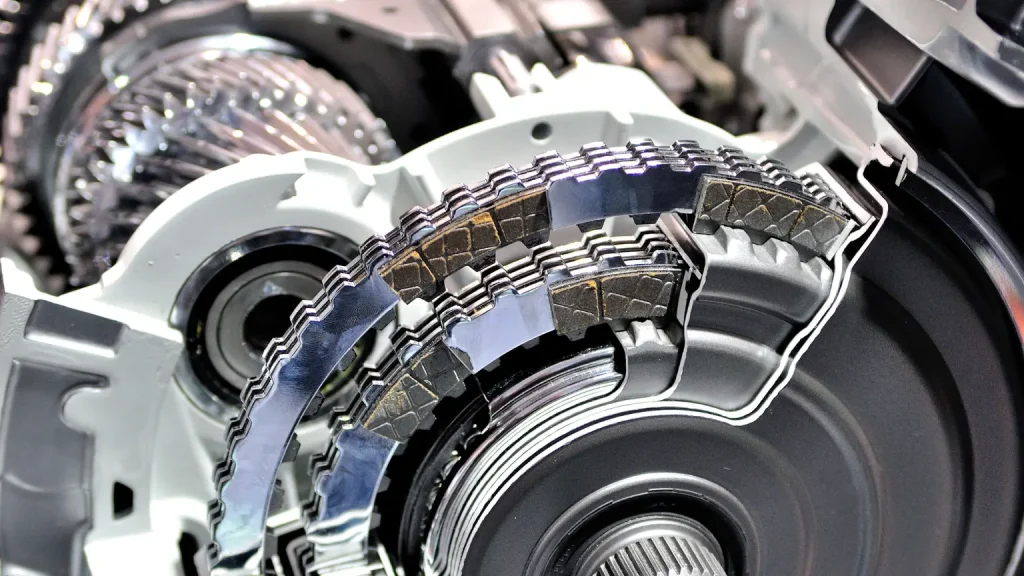
Advancements in Semi-Automatic Gearbox Technology
Integration of AI and Machine Learning
The integration of AI and machine learning is transforming how vehicles respond to driving conditions. These systems learn driver habits and adapt gear-shifting patterns to enhance performance and fuel efficiency. For instance, AI-powered transmissions can predict the need for gear changes based on terrain or traffic patterns, optimizing the driving experience and reducing strain on the system.
Use of Lightweight Materials
Modern car transmission technology has embraced lightweight materials like aluminum and composite alloys to improve efficiency and reduce the weight of semi-automatic systems. Manufacturers are enhancing fuel economy and vehicle agility by minimizing the mass of transmission components. This focus on lightweight design is significant as the industry shifts toward more sustainable and energy-efficient vehicles.
Improvements in Sensors and Control Units
Innovations in sensor technology and electronic control units (ECUs) have refined the precision and responsiveness of semi-automatic transmission mechanics. Advanced sensors monitor engine speed, load, and other variables in real-time, enabling quicker and more accurate gear shifts. Enhanced ECUs process this data seamlessly, ensuring that every gear change aligns with optimal performance.
Future Car Transmission Innovations
Innovations in this space aim to enhance the driving experience, environmental sustainability, and compatibility with emerging automotive technologies. Below are five trends shaping the future of semi-automatic transmissions:
- Integration with Hybrid Systems: These systems optimize fuel efficiency while reducing emissions by combining traditional internal combustion engines with electric motors. Semi-automatic transmissions are uniquely suited for hybrid systems because they offer precise gear control, ensuring a smoother transition between electric and gasoline power. This integration also allows for better utilization of electric energy during low-speed driving and maximized efficiency during acceleration. As hybrid vehicles become more popular, semi-automatic transmissions will play a crucial role in meeting regulatory standards for emissions and efficiency while maintaining exceptional performance.
- Advancements in Autonomous Compatibility: As autonomous vehicle technology advances, semi-automatic transmissions are being designed to integrate seamlessly with self-driving systems. These transmissions will offer adaptive gear shifting tailored to various driving scenarios, such as urban navigation or highway cruising, ensuring smoother and safer operation in autonomous modes. By leveraging artificial intelligence, future semi-automatic systems will anticipate road conditions, traffic patterns, and driving behaviors to select the optimal gear without driver input. Such compatibility enhances vehicle efficiency and contributes to the reliability and safety of autonomous driving systems.
- Sustainability Through Recycled Materials: In an effort to reduce the automotive industry's environmental impact, manufacturers are increasingly using recycled and eco-friendly materials in transmission components. These materials maintain the strength and durability required for performance while contributing to a more sustainable production process. Lightweight components derived from recycled alloys and composites also help improve fuel efficiency by reducing the vehicle's overall weight. This shift toward sustainability aligns with global initiatives to reduce carbon footprints, making semi-automatic transmissions a greener choice for future cars.
- Enhanced Connectivity with Vehicle Systems: Future semi-automatic transmissions will feature advanced connectivity with onboard systems, creating a more integrated and intuitive driving experience. Drivers will gain real-time insights into transmission performance, fuel efficiency, and maintenance needs through enhanced communication with diagnostics and infotainment systems. These systems may also incorporate predictive analytics, alerting drivers to potential issues before they become serious. Additionally, connectivity with navigation systems could optimize gear shifts based on terrain and route conditions, further improving efficiency. Deeper integration will give drivers unprecedented control and understanding of their vehicles, making semi-automatic transmissions smarter and more user-friendly than ever before.
- Energy Recovery Features: Energy recovery is a promising innovation for semi-automatic transmissions, allowing them to convert kinetic energy generated during gear shifts into usable power. The regenerative capability could recharge hybrid or electric vehicle batteries, enhancing overall energy efficiency. By capturing energy that would otherwise be lost, these systems contribute to extended driving range and reduced reliance on external charging or fuel. This feature supports the growing demand for sustainable vehicle technologies and positions semi-automatic transmissions as a key player in the push for energy-efficient mobility.
These trends highlight how technology is evolving to meet the demands of modern vehicles and environmentally conscious consumers. Semi-automatic gearboxes will remain essential to automobile engineering in the future as they continue to lead these developments.
Benefits of Semi-Automatic Transmissions
Fuel Savings Through Optimized Shifting
By ensuring that the engine operates within its ideal range during gear shifts, these systems reduce fuel consumption. Unlike traditional manual transmissions relying on driver judgment, semi-automatics use advanced algorithms to calculate the most efficient shifting points. Optimization saves fuel and reduces emissions, making it an environmentally conscious choice for drivers.
Increased Comfort for Drivers in Stop-and-Go Traffic
The convenience offered by the semi-automatic transmission function is particularly evident in urban traffic. A manual transmission can exhaust stop-and-go conditions due to constant clutch and gear operation. Semi-automatics alleviate this burden by automating these tasks, allowing drivers to focus on navigation and safety. Increased comfort transforms the driving experience, reducing stress and fatigue during daily commutes or extended periods in congested traffic.
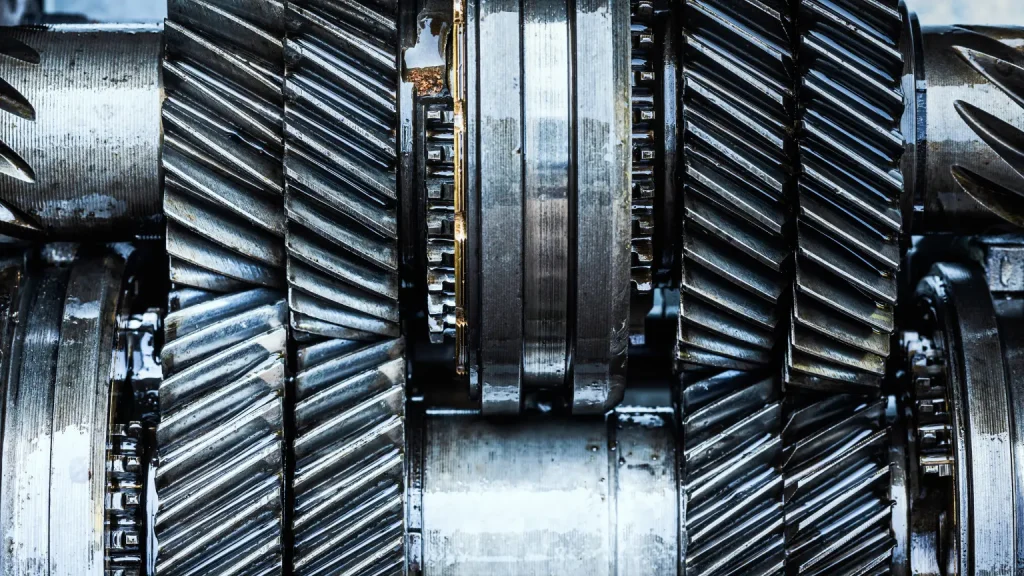
Whether you're a car enthusiast seeking dynamic control or a commuter looking for comfort and convenience, the evolution of car transmission technology offers a compelling solution. By embracing this cutting-edge technology, drivers can enjoy a seamless blend of performance, efficiency, and reliability. The road ahead is bright for semi-automatics as their potential continues to unlock new possibilities in the ever-evolving world of automotive engineering.
Follow a maintenance program
Ante gravida id aenean quis egestas risus nam amet nullam leo diam diam aliquam eu eu malesuada arcu rhoncus suspendisse nulla mattis ut amet sagittis in justo egestas.

search for a trusted mechanic
Lorem ipsum dolor sit amet, consectetur adipiscing elit lobortis arcu enim urna adipiscing praesent velit viverra sit semper lorem eu cursus vel hendrerit elementum morbi curabitur etiam nibh justo, lorem aliquet donec sed sit mi dignissim at ante massa mattis.
- Neque sodales ut etiam sit amet nisl purus non tellus orci ac auctor
- Adipiscing elit ut aliquam purus sit amet viverra suspendisse potent
- Mauris commodo quis imperdiet massa tincidunt nunc pulvinar
- Excepteur sint occaecat cupidatat non proident sunt in culpa qui officia
Check the air pressure in your tires
Vitae congue eu consequat ac felis placerat vestibulum lectus mauris ultrices cursus sit amet dictum sit amet justo donec enim diam porttitor lacus luctus accumsan tortor posuere praesent tristique magna sit amet purus gravida quis blandit turpis.
Review your suspension frequently
At risus viverra adipiscing at in tellus integer feugiat nisl pretium fusce id velit ut tortor sagittis orci a scelerisque purus semper eget at lectus urna duis convallis. porta nibh venenatis cras sed felis eget neque laoreet suspendisse interdum consectetur libero id faucibus nisl donec pretium vulputate sapien nec sagittis aliquam nunc lobortis mattis aliquam faucibus purus in.
- Neque sodales ut etiam sit amet nisl purus non tellus orci ac auctor
- Adipiscing elit ut aliquam purus sit amet viverra suspendisse potent
- Mauris commodo quis imperdiet massa tincidunt nunc pulvinar
- Excepteur sint occaecat cupidatat non proident sunt in culpa qui officia
Service your vehicle as regularly as posible
At risus viverra adipiscing at in tellus integer feugiat nisl pretium fusce id velit ut tortor sagittis orci a scelerisque purus semper eget at lectus urna duis convallis. porta nibh venenatis cras sed felis eget neque laoreet suspendisse interdum consectetur libero id faucibus nisl donec pretium vulputate sapien nec sagittis aliquam nunc lobortis mattis aliquam faucibus purus in.
“Nisi quis eleifend quam adipiscing vitae aliquet bibendum enim facilisis gravida neque velit euismod in pellentesque”
Conclusion
Eget lorem dolor sed viverra ipsum nunc aliquet bibendum felis donec et odio pellentesque diam volutpat commodo sed egestas aliquam sem fringilla ut morbi tincidunt augue interdum velit euismod eu tincidunt tortor aliquam nulla facilisi aenean sed adipiscing diam donec adipiscing ut lectus arcu bibendum at varius vel pharetra nibh venenatis cras sed felis eget.

